Duncan Busby continues his look at indoor tuning with an analysis of what different point weights can do for your setup
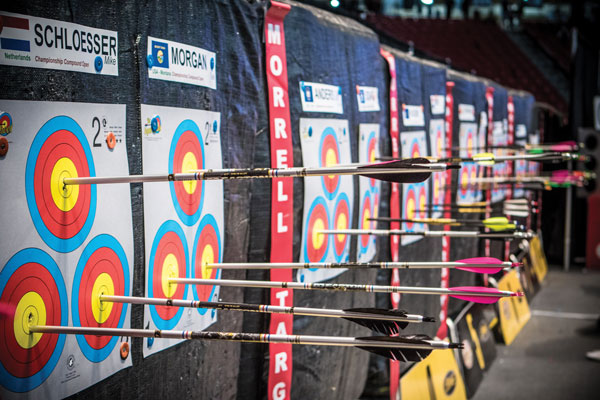
The idea of tuning is to not only select the best arrow spine but to find a setup that is sympathetic to both your shooting form and ability
For Duncan’s Top 10 Tips for Indoor Shooting click here
In the last issue of Bow International magazine I explained how to set up your arrows for indoor shooting, in the second part of this feature we’ll be finding out how to choose and tune your point weights. So what difference can an arrow’s point weight and shape make to your scores, and why should you put so much effort into finding your perfect point?
Adjusting your point weight is a very effective way to tune your arrows, and although some believe it unnecessary, if you have already tuned your bow and made adjustments to your set-up without much improvement, it can make a real difference to your results. But many archers put little thought into what point weight they should use and what effect it will have on the performance of their arrows.

Parabolic: Parabolic points have a rounder shape, and are slightly harder wearing than pin points
Pins: Pin points are a popular choice with compound archers, as they guide the arrow in at a straight angle
Shape
Arrow points come in two different shapes for indoor archery; a traditional parabolic design or a pin point style.
Pin points have become very popular in recent years; not only do they look striking but many archers believe they allow them to score a little higher than a parabolic designed point does. The narrow and sharp tip guides the arrow into the target face at a straighter angle, making it less likely to kick away from the line, and if you’ve already carved out a good hole in the centre of the target a pin point will find it and guide the arrow in more easily. Parabolic points do still have their followers though, as they tend to be harder wearing.
There are several manufacturers who make points for indoor arrows and in various different weights. One of the more popular choices is Pro Points by Competition Archery Products – these points are very closely weight matched, are precision made from tough, durable materials, and they come in a variety of designs depending on whether you are looking for a traditional parabolic design or a pin style point.
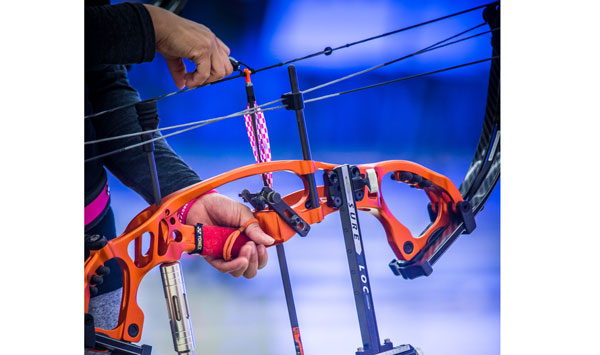
The longer arrows used indoors often need a heavier point in to get the right balance
Weight
When choosing the weight of your point you should be aware that it will affect the dynamic spine of your arrow; this is the actual stiffness of the arrow in flight. Although this is determined by many different factors, including your bow speed, poundage and arrow length, your point weight has a significant effect on how your arrows fly.
When the arrow is released the point provides resistance against the driving force of the bow string, and this puts the shaft of the arrow under increased pressure and causes it to flex more. As a result, the more point weight you add to your arrow the weaker it will become.
Point weight also affects the arrow’s front of centre, or FOC; this is the balance point of a finished arrow. FOC is calculated as a percentage, which relates to how far forward the balance point is from the centre of the arrow. A good FOC measurement for target archery is considered to be between 10 and 15 percent as this gives the arrow optimum downrange stability without causing too much unwanted oscillation. A longer arrow, like those favoured for indoor shooting, will typically need a heavier point in order to give it a FOC within this range.
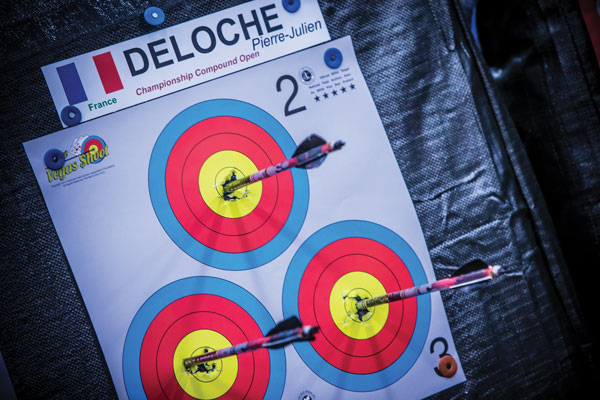
If you’ve already carved out a good hole in the target a pin point can find it more easily
Making the selection
So what point weight should you be using with your indoor arrows when you take these factors into account? Unfortunately there isn’t a simple answer to this as it will depend on your equipment, so a little trial and error may be required in order to fine tune your point weight to your specific setup.
If you followed last issue’s feature on how to set up and basic tune your arrows, you should be using the manufacturers’ recommended point weight of around 100 or 120 grains. When you carried out the paper and bare shaft tests you may have noticed that your arrows produced a stiff result; this is to be expected when shooting with large indoor shafts, so try increasing your point weight before running the tests again. It’s best to make your point weight adjustments gradually, rather than jumping from the lightest to heaviest in one go, and make sure you test a good range of point weights to see which one gives you the best results.
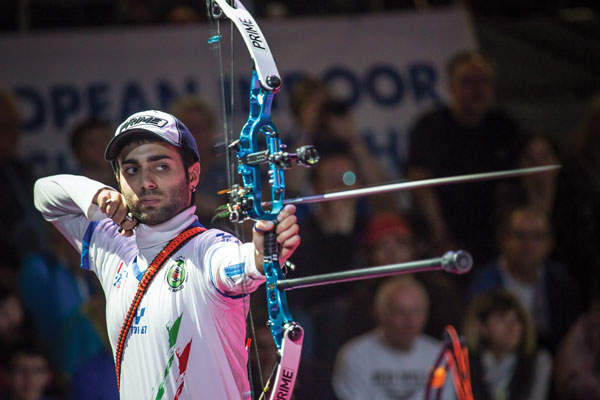
The driving force of the bow string causes the arrow to flex, and you can adjust the amount of flex by altering your point weight
After completing these initial tuning tests you’ll need to test your point weight at 18 metres. It’s best to do this on a new target face so you can assess your arrow groups and compare any changes you make.
Try to shoot at least 30 arrows before you make any adjustments to your point weight, so you can rule out any wayward shots. You should be paying attention to your left and right groups rather than how far up and down your arrows are hitting, and take particular notice of how tolerant your arrows are when you execute a poor shot, as overly stiff arrows can be rather unforgiving.
Once again, you should test a wide range of point weights to see which give you the smallest, tightest arrow groups on the target. Don’t forget to take note of any poorly made shots – we all make mistakes from time to time and it’s no use if your good arrows are all inside the X ring and your bad ones are touching the red. The idea of tuning is to not only select the best arrow spine but to find a setup that is sympathetic to both your shooting form and ability.
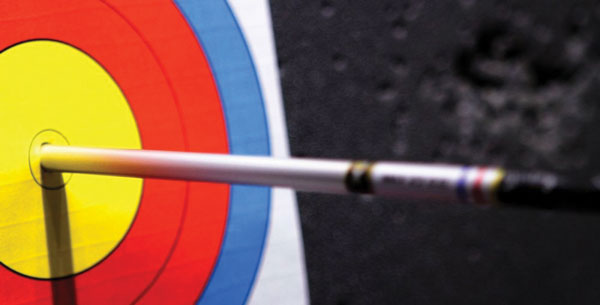
The perfect arrow tune will be accurate on your good shots and forgiving on your less-than-perfect shots
Once you’ve tested your different point weights you should compare your target faces to see which one has the most consistent groups. This should allow you to effectively choose the most accurate point weight for your arrows.
You may find that the heavier points will improve your groups and consistency, but they also cause your arrows to react weak when you shoot them through paper and when you do a bare shaft test. If this is the case, consider cutting your arrows a little shorter or lowering your poundage in order to correct this tuning flaw. And remember that when using heavy arrows you may need to increase the tension of your launcher or increase your blade strength, particularly if you are getting consistently low shots. But don’t forget that every time you make a change to your arrows or to your rest it’s advisable to re-shoot the paper or bare shaft test to make sure there has been no disruption to your arrow flight.
Indoor shooting is the ultimate test of an archer’s skill, accuracy and nerve, as it has none of the variables outdoor archery brings; it really is just you and the target. Having equipment that is correctly tuned and in perfect sync to your individual shooting form is essential if you want to maximise your results, and your arrow points play a crucial part in this.
As indoor competitions are restricted in distance and discipline, your choice of points are also limited, the only real difference you can make is in your point weight, so try them all – they usually come in 20 grain increments and cover everything from 100 to 200 grains. You can go heavier but it’s unlikely you’d need a point that weighty. Testing a wide range of weight options will allow you to find the most dynamic arrow combination for your setup. So although indoor shooting can feel confining at times, you should see it as an opportunity for more effective tuning in an archer’s constant pursuit of perfection.
This article originally appeared in the issue 121 of Bow International magazine. For more great content like this, subscribe today at our secure online store www.myfavouritemagazines.co.uk


An interesting article
If I were using a compound bow with a 25 inch 1716 arrow shaft
What point weight would you recommend for the bow set at the following poundages 35, 40, 45 or 50 lbs.
Thanks Ken